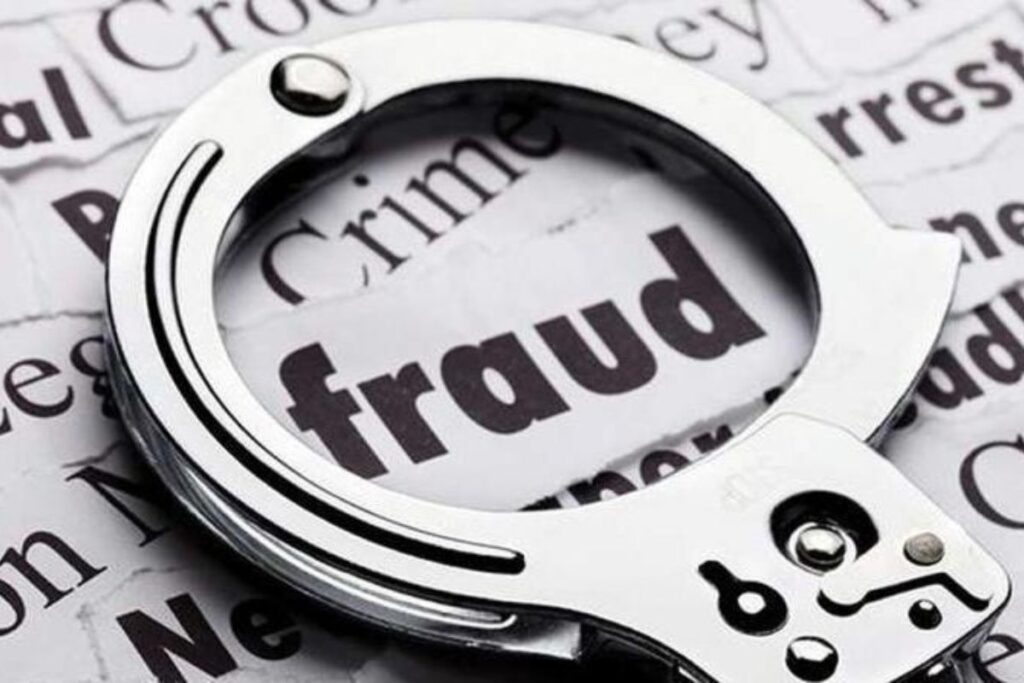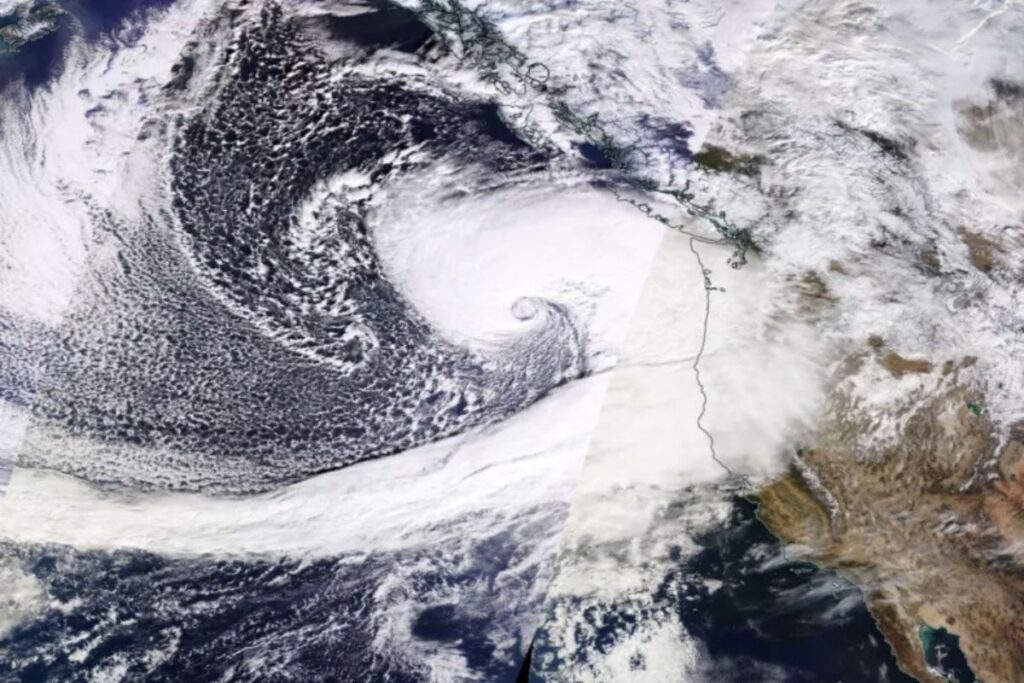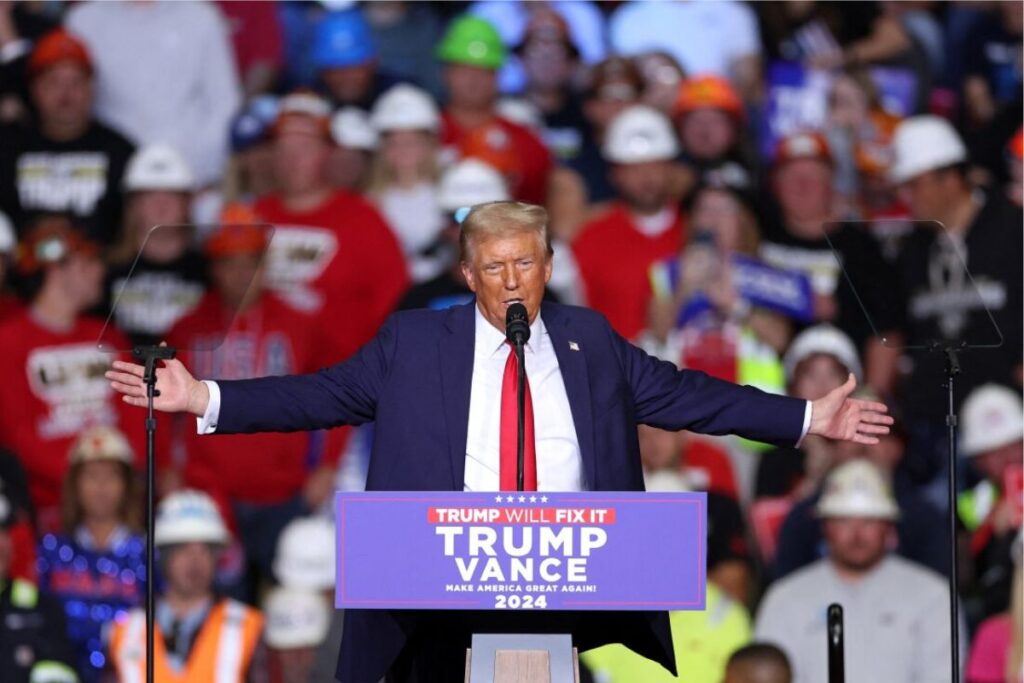Intel CEO Pat Gelsinger Retires After Four Decades of Leadership

Intel Appoints Interim Co-CEOs Amid Leadership Transition Intel Corporation has announced the retirement of CEO Pat Gelsinger, effective December 1, 2024, marking the end of his illustrious career spanning over 40 years. Gelsinger has also stepped down from the company’s board of directors, leaving behind a legacy of innovation and strategic growth. In a statement, Intel revealed the appointment of David Zinsner and Michelle Johnston Holthaus as interim co-CEOs while the company undertakes a global search for a permanent successor. Holthaus will additionally assume the newly established role of CEO of Intel Products, overseeing the Client Computing Group (CCG), Data Center and AI Group (DCAI), and Network and Edge Group (NEX). Meanwhile, Frank Yeary, independent chair of Intel’s board, has been named interim executive chair to guide the company through this leadership transition. Leadership Transition Focuses on Innovation and Product Excellence Frank Yeary expressed gratitude for Pat Gelsinger’s contributions, stating, “Pat has been a transformative leader, steering Intel through critical phases and advancing semiconductor manufacturing capabilities. While his departure marks the end of an era, the board is committed to building on the foundation he laid to restore investor confidence and achieve operational excellence.” Yeary highlighted the importance of the product group in Intel’s strategy, noting that Holthaus’ elevation as CEO of Intel Products ensures the company remains customer-centric. He emphasized Intel’s focus on advancing manufacturing capabilities, simplifying its product portfolio, and optimizing expenses to position the company for long-term success. Pat Gelsinger Reflects on His Legacy Reflecting on his tenure, Pat Gelsinger stated, “Leading Intel has been the honor of my lifetime. While this is a bittersweet moment, I am proud of the strides we’ve made together. This year has been challenging, but the decisions we made were necessary to align with market dynamics.” Pat Gelsinger joined Intel in 1979 and made significant contributions across various roles, including serving as the company’s first Chief Technology Officer. Under his leadership, Intel achieved groundbreaking innovations, cementing its role as a global technology leader. Experienced Leaders Stepping In David Zinsner and Michelle Johnston Holthaus, the newly appointed interim co-CEOs, bring decades of industry experience to their roles. In a joint statement, Zinsner and Holthaus affirmed their commitment to continuing Pat Gelsinger’s vision, stating, “We are dedicated to advancing Intel Products and ensuring our customers’ needs remain at the forefront.” Intel’s Future Vision As Intel undergoes this transition, the company’s focus remains on driving innovation, enhancing manufacturing competitiveness, and delivering value to customers and investors. With a robust interim leadership team and a clear strategic direction, Intel aims to solidify its position as a global technology leader. For more insights, follow The Business Tycoon
Indian-Origin Neurosurgeon Penalized Over $2 Million for Medicare Fraud in the US

Dr. Rajesh Bindal, an Indian-origin neurosurgeon from Houston, has been fined a staggering $2,095,946 for Medicare fraud and the Federal Employees Health Benefits Program (FEHBP). The U.S. Attorney’s Office, led by Alamdar S. Hamdani, announced the penalty on Wednesday, shedding light on fraudulent practices that undermine trust in the healthcare system. Details of the Medicare Fraud Federal investigators revealed that Dr. Rajesh Bindal, 53, falsely billed Medicare for invasive procedures involving electro-acupuncture devices. These surgeries, which typically require an operating room, were never actually performed. Instead, the devices were taped behind patients’ ears in a non-surgical setting, often falling off within days. Adding to the malpractice, it was discovered that these procedures were sometimes carried out by a device sales representative or a physician assistant at the Texas Spine & Neurosurgery Center P.A., rather than by Dr. Bindal himself. Statements from Officials “A neurosurgeon like Dr. Bindal knows the difference between genuine surgery and sticking a device behind someone’s ear,” stated U.S. Attorney Hamdani. “Despite being one of the highest-paid specialists in medicine, he chose personal greed over integrity and patient care.” Jason E. Meadows, Special Agent in Charge of the Department of Health and Human Services – Office of Inspector General, echoed the criticism. “This type of Medicare fraud not only wastes taxpayer dollars but also undermines public confidence in healthcare providers and critical programs like Medicare,” Meadows said. Impact on Healthcare Integrity This case underscores the pressing need for accountability in healthcare. Medicare fraud not only leads to financial losses but also affects vulnerable patients who rely on trustworthy medical practitioners. The misuse of taxpayer-funded programs like Medicare has broader implications, damaging the reputation of ethical healthcare providers. Conclusion Dr. Rajesh Bindal’s actions have drawn attention to the darker side of medical practice, where financial greed takes precedence over patient care. The hefty fine serves as a warning to other practitioners and reinforces the commitment of U.S. authorities to combat Medicare fraud and maintain the integrity of healthcare services. For more insights, follow The Business Tycoon
Ukraine Says Record-Breaking Russian Drone Assault Strikes Across the Nation

In a chilling escalation, Russia launched a record 188 Russian drones across Ukraine in a single night, marking the largest deployment of unmanned aerial vehicles in the ongoing conflict, the Ukrainian Air Force reported on Tuesday. This latest wave targeted 17 regions, damaging apartment buildings and critical infrastructure, including the national power grid. Fortunately, most of the Russian drones were intercepted, and no casualties were reported. The attack comes amid intensified Russian efforts to cripple Ukraine’s civilian and energy infrastructure as winter looms. Since mid-2024, Moscow has ramped up its use of Russian drones, missiles, and glide bombs to sow fear and disrupt daily life in Ukraine. Battlefield Momentum in Donetsk While Russian drone strikes dominate the headlines, Russia has maintained the battlefield initiative for the past year, concentrating its offensive in the eastern Donetsk region. There, Russian forces are making incremental but significant tactical advances, threatening critical Ukrainian supply routes, according to the Washington-based Institute for the Study of War (ISW). Ukrainian forces, though holding their defenses, are struggling to counter Russia’s momentum as the latter attempts to solidify control in this strategically vital area. ISW analysts noted that while Ukrainian defenses are not at risk of immediate collapse, Russia’s long-term goal of capturing the entirety of Donetsk remains a pressing challenge for Kyiv. A Winter of Uncertainty This attack underscores the mounting difficulties Ukraine faces heading into a harsh winter. Concerns over the reliability of the nation’s energy infrastructure persist, as power grids remain vulnerable to repeated Russian strikes. The seven-hour air raid alert in Kyiv overnight highlighted the psychological toll such sustained assaults take on civilians. Adding to Ukraine’s challenges is uncertainty over future U.S. support. President-elect Donald Trump is set to assume office in January, and his administration’s stance on aid to Ukraine will be pivotal in shaping the conflict’s trajectory. Russia’s Perspective Meanwhile, the Russian Defense Ministry claimed its forces shot down 39 Ukrainian drones targeting regions near the border with Ukraine. These countermeasures, Moscow asserts, aim to safeguard its territory against Ukrainian retaliation. What Lies Ahead As the war approaches its third year, both nations seem locked in a relentless cycle of escalation. Ukraine must contend with the dual challenges of defending its front lines and ensuring civilian resilience against Russian attacks. Meanwhile, Russia’s push in Donetsk remains a strategic focus, with its incremental gains threatening to reshape the battlefield. This conflict, characterized by attrition and unpredictability, shows no signs of abating as Ukraine braces for a winter of uncertainty. For more insights, follow The Business Tycoon
Global Climate Summit 2024: Nations Commit to Ambitious Green Targets

The Global Climate Summit 2024 has emerged as a pivotal moment in the fight against climate change, with leaders from over 190 nations converging to pledge bold actions for a sustainable future. The summit, held in Nairobi, Kenya, highlighted the urgency of collective global efforts to curb carbon emissions, combat deforestation, and promote renewable energy innovations. This year’s Global Climate Summit 2024 comes at a critical juncture, with escalating climate crises such as wildfires, floods, and rising sea levels demanding immediate and robust action. The event not only set ambitious targets but also focused on actionable frameworks to ensure accountability and measurable progress. Historic Commitments from Major Economies At the Global Climate Summit 2024, major economies including the United States, China, and the European Union announced historic commitments to reduce greenhouse gas emissions by 50% by 2030. This marks a significant increase in ambition compared to previous targets. President Joe Biden emphasized the United States’ dedication to achieving net-zero emissions by 2050, unveiling a $2 trillion clean energy package that prioritizes solar, wind, and nuclear technologies. China, the world’s largest emitter of carbon dioxide, committed to a peak emissions target by 2030 and pledged $1.5 billion toward global green technology partnerships. Similarly, the European Union reiterated its commitment to the Green Deal, aiming to make Europe the first carbon-neutral continent by 2050. Developing Nations Demand Climate Justice While wealthier nations pledged significant investments, developing countries at the Global Climate Summit 2024 underscored the importance of climate justice. African and South Asian nations, disproportionately affected by climate change despite contributing minimally to global emissions, demanded equitable financing mechanisms. Kenya’s President William Ruto, hosting the summit, emphasized the need for developed nations to honor their promises of mobilizing $100 billion annually in climate finance. “Africa is not the problem; we are the solution. With sufficient support, we can leapfrog to green energy and preserve our critical ecosystems,” Ruto stated during his keynote speech. Focus on Renewable Energy and Innovation Renewable energy emerged as a central theme at the Global Climate Summit 2024. A groundbreaking agreement to triple global renewable energy capacity by 2030 was one of the summit’s standout achievements. This includes significant investment in solar farms, offshore wind turbines, and hydrogen fuel technologies. The International Renewable Energy Agency (IRENA) announced a collaborative initiative to support countries transitioning to renewable energy, particularly in regions where access to clean energy remains limited. As part of this initiative, funding will be allocated to train local workforces, modernize energy grids, and scale up renewable infrastructure. Private Sector Joins the Fight Private sector participation at the Global Climate Summit 2024 reached unprecedented levels, with corporations pledging over $500 billion for sustainable projects. Tech giants like Google and Microsoft announced plans to achieve carbon-negative operations by 2035, while global automakers committed to phasing out internal combustion engines entirely by 2040. These commitments were welcomed as essential contributions to achieving the goals set at the summit. Collaboration between governments, businesses, and non-governmental organizations was identified as a key driver for transformative change in combating climate change. Global Youth Leaders and Grassroots Movements The voice of youth and grassroots activists resonated strongly at the Global Climate Summit 2024. Greta Thunberg and other young climate advocates addressed world leaders, calling for immediate action rather than distant promises. “We cannot wait until 2050 for solutions. The science is clear, and the time to act is now,” Thunberg declared during a panel discussion. Grassroots movements also played a significant role in shaping the summit’s agenda. Indigenous leaders from the Amazon, Southeast Asia, and Africa highlighted the importance of preserving natural habitats as carbon sinks and called for greater protection of indigenous rights. Challenges and Controversies Despite the overwhelming optimism, the Global Climate Summit 2024 was not without its challenges. Critics pointed to the lack of enforcement mechanisms to ensure countries meet their targets. Skepticism also lingered over whether wealthy nations would fulfill their financial commitments, as past promises have often fallen short. Another contentious issue was the inclusion of fossil fuel executives in the discussions. While their participation was framed as necessary for a realistic energy transition, environmentalists argued that it undermined the summit’s integrity and goals. Conclusion: A Step Forward Amidst Uncertainty The Global Climate Summit 2024 concluded with a renewed sense of urgency and determination to tackle the climate crisis. The ambitious green targets set during the summit signal a major shift toward sustainability, but their success depends on immediate action, global cooperation, and accountability. As nations return home with their commitments in hand, the spotlight will be on how effectively these pledges are implemented. The Global Climate Summit 2024 serves as a reminder that the future of our planet hinges on the collective will to act decisively and inclusively for the greater good. By ensuring that the momentum generated at this summit translates into tangible outcomes, the world can hope to make significant strides in combating climate change and securing a sustainable future. For more insights, follow The Business Tycoon
Jaguar’s Bold Rebranding Sparks Debate: Musk, Tate Among Critics

A New Era for an Iconic Brand Jaguar, the legendary British luxury carmaker, has found itself at the center of heated discussions following the launch of a controversial rebranding campaign. The luxury automotive brand’s initiative, unveiled this week, features a vibrant new logo, a colorful ad campaign celebrating diversity, and a bold slogan: “Copy Nothing.” However, the campaign has been met with criticism from fans and notable figures like Tesla CEO Elon Musk and influencer Andrew Tate, who accuse the luxury automotive giant of abandoning its heritage. The Campaign: Bright Colors, Bold Moves The rebranding effort, rolled out across social media platforms, introduced a minimalist new logo alongside a revamped “leaper” emblem. Accompanying advertisements showcased models in vivid outfits and urban settings, emphasizing individuality and creativity over traditional luxury automotive imagery. Yet, one striking absence caught viewers’ attention—there were no Jaguar cars featured in the ad. Many online commentators expressed disappointment, with one user lamenting, “Jaguar has killed a British icon.” The automaker described the campaign as part of a larger artistic reinvention and promised further reveals at Miami Art Week on December 2. High-Profile Criticism Musk Questions the Message Elon Musk, known for his outspoken online presence, didn’t hold back. Commenting on X (formerly Twitter), he quipped, “Do you sell cars?” The post quickly went viral, amassing over 164,000 likes—far eclipsing the engagement with the luxury automotive brand’s campaign. Tate’s Harsh Words Controversial influencer Andrew Tate derided the campaign, labeling it “gay bullsht”* and vowing never to purchase a Jaguar vehicle. His remarks ignited further debate, amplifying polarization around the ad’s messaging. Political and Industry Comparisons British politician Nigel Farage compared Jaguar’s move to Bud Light’s 2023 marketing misstep, which faced boycotts over a partnership with a transgender influencer. Farage predicted financial repercussions for the luxury automotive maker, citing the ad as evidence of a misaligned strategy. Even rival brands joined the fray, with companies like Lucid Motors and Razer poking fun at the campaign in satirical social media posts. Jaguar’s Response Despite the wave of criticism, the luxury automotive company remained steadfast, using its social media platforms to defend the campaign’s vision. The brand teased upcoming announcements and actively engaged with detractors. When Musk questioned the lack of cars, Jaguar responded playfully: “Yes. We’d love to show you. Join us for a cuppa in Miami on 2nd December?” To another user warning of financial consequences with the phrase “go woke, go broke,” Jaguar simply replied: “Go hard.” Jaguar insists the campaign represents a “renaissance” for the luxury automotive manufacturer, aligning with its ambitious transition to electric vehicles (EVs) by 2025. The Bigger Picture Transitioning to Electric This rebranding marks a turning point for Jaguar as it phases out most of its existing models, except the F-Pace, to focus entirely on an electric lineup. CEO Adrian Mardell acknowledged the economic challenges of the current portfolio, describing its profitability as “close to zero.” Inclusive Marketing Trends Jaguar’s bold pivot is part of a larger trend of inclusive marketing seen in industries worldwide. While such campaigns often aim to attract modern, diverse audiences, they also risk alienating traditional customer bases—a risk underscored by the backlash to the luxury automotive campaign. What Lies Ahead As Jaguar prepares to unveil more of its vision during Miami Art Week, the rebranding has undeniably sparked conversation in the luxury automotive world. Whether the campaign will redefine the brand for a modern era or face further resistance remains uncertain. The coming months will determine if the luxury automotive manufacturer’s commitment to inclusivity and innovation resonates with its audience—or if the automaker will need to adjust course in its journey toward an electric future. For more insights, follow The Business Tycoon
Bomb Cyclone Wreaks Havoc Across Northwest U.S.

A devastating storm, classified as a “bomb cyclone,” has battered the northwest United States, causing significant disruptions and claiming at least one life. The powerful weather system brought intense winds, heavy rainfall, and widespread destruction, leaving over half a million people without power. What is a Bomb Cyclone? A bomb cyclone occurs when a storm intensifies rapidly, experiencing a sharp drop in atmospheric pressure. This particular storm, which began on Tuesday, is fueled by the strongest atmospheric river of the season, a concentrated plume of moisture impacting California and the Pacific Northwest. The Weather Prediction Center has issued warnings for hurricane-force winds and excessive rainfall, cautioning residents to stay prepared. Fatalities and Damage in Washington State Washington State bore the brunt of the storm’s wrath. In Lynnwood, a woman tragically lost her life when a large tree collapsed onto a homeless encampment, according to South County Fire. In Seattle, another falling tree pinned a person inside their vehicle, though the individual was later rescued and reported to be in stable condition. The storm’s ferocity also struck residential areas. Wendy Harrington, a homeowner in Issaquah, recounted the terrifying moment a 70-year-old tree toppled onto her house. “It felt explosive, like a bomb going off,” she said. Power Outages Across the Region As of early Wednesday, poweroutage.us reported over 600,000 homes without electricity in Washington State. Fluctuating outage numbers were attributed to technical difficulties, including internet disruptions that hampered accurate reporting. Oregon and California also experienced outages, with more than 8,000 and 24,000 customers respectively left without power. High Winds and Severe Weather Alerts The storm’s peak wind speeds were recorded off the coast of Vancouver Island, with gusts reaching 101 mph (163 kph). Along the Oregon coast, winds hit 79 mph (127 kph), while Mount Rainier in Washington experienced speeds of 77 mph (124 kph). In Bellevue, Washington, authorities warned residents of the dangers posed by falling trees, urging them to remain indoors and away from windows. Flooding and Snowfall in California and Oregon Northern California faced flood and high wind watches, with up to 8 inches (20 centimeters) of rain expected in areas like the San Francisco Bay and Sacramento Valley. The National Weather Service warned of flash flooding, rockslides, and debris flows. The Sierra Nevada was placed under a winter storm watch, forecasting 15 inches (38 centimeters) of snow and wind gusts exceeding 75 mph (120 kph). In Oregon, a flood watch was issued for southwestern areas, while strong winds and rough seas disrupted ferry routes between Port Townsend and Coupeville in Washington. Blizzard Warnings and Travel Disruptions A blizzard warning was declared for the Cascades in Washington, including Mount Rainier National Park. Forecasters predict up to a foot of snow and gusts as high as 60 mph (97 kph), making travel through mountain passes hazardous and potentially impossible. Safety Precautions and Emergency Response The National Weather Service continues to emphasize the importance of safety during high winds, urging residents to avoid exterior rooms, stay clear of windows, and exercise caution when driving. Emergency responders are working tirelessly to manage the fallout from this extreme weather event. Conclusion The bomb cyclone underscores the unpredictable and destructive power of nature, leaving communities across the northwest U.S. grappling with its aftermath. Residents are advised to remain vigilant as weather conditions evolve, with emergency updates and safety precautions readily available through official channels. For more insights, follow The Business Tycoon
CIA Official Arrested for Leaking Classified Intel on Israel-Iran Plans

In a high-profile case involving leaked classified intelligence, a CIA official arrest has captured global attention due to its potential impact on national security and international relations. The official, identified as Asif Rahman, has been charged with disclosing sensitive U.S. intelligence regarding Israel’s military plans against Iran. This CIA official arrest highlights ongoing challenges in protecting classified data within intelligence agencies. According to The New York Times, Rahman, who served overseas for the Central Intelligence Agency, was apprehended by the FBI in Cambodia. The CIA official arrest led to his pending court appearance in Guam, scheduled for Thursday. Last week, Rahman was indicted in Virginia on two counts of willful retention and transmission of national intelligence, following the CIA official arrest. Details of the Leak The sensitive documents that led to the CIA official arrest reportedly outlined Israel’s strategic preparations for a potential military strike on Iran. While the documents did not disclose specific targets, they were shared on a Telegram channel named Middle East Spectator, raising concerns about compromised intelligence and international security. Rising Tensions Between Israel and Iran The CIA official arrest comes amid escalating conflict in the Middle East. On October 1, Iran launched close to 200 ballistic missiles at Israel in response to the targeted killings of senior figures associated with Hamas and Hezbollah. This prompted Israel to retaliate with a series of military strikes on Iranian targets later in October. These actions have intensified regional instability, making the CIA official arrest and the leak of sensitive information a matter of heightened urgency for U.S. intelligence and its allies. Legal Proceedings and Implications Rahman, who held a top-secret security clearance, faces severe charges stemming from the CIA official arrest. This situation underscores the importance of safeguarding national security data, particularly during periods of international tension. If found guilty, Rahman’s case will have significant legal and operational implications, reinforcing the need for stringent intelligence protections. The arrest and the ensuing legal battle continue to draw global attention, with further developments expected as Rahman’s court proceedings begin. For more insights, follow The Business Tycoon
Mystery of Russia’s “Spy Whale” Revealed in New Documentary

The beluga whale, famously known as the “spy whale,” may have been guarding sensitive “Kremlin property” before its death in Norway, as revealed in a recent documentary. The whale, nicknamed Hvaldimir—a blend of the Norwegian word for whale, hval, and Russian President Vladimir Putin’s name—was discovered floating in Risavika Bay, southern Norway, this past September. The “Spy Whale” and Its Mysterious Past Hvaldimir first gained worldwide attention in April 2019 when fishermen spotted him near Ingoya, northern Norway. His unusual harness, equipped with a small camera and a buckle marked “Equipment St Petersburg,” fueled suspicions that he had been trained for espionage. New Evidence from BBC Documentary The BBC documentary Secrets of the Spy Whale, after a 10-month investigation, posits that Hvaldimir was more likely a trained “guard whale” rather than a spy. Director Jennifer Shaw shared with The Observer: “Our findings about Hvaldimir’s potential role bring us closer to solving the mystery, but they also raise further questions about what Russia might be guarding in the Arctic, and why.” How Animals Could Be Trained for Security The documentary team consulted a former dolphin trainer and experts from early US Navy programs to understand the use of animals as guards. According to Blair Irvine, dolphins and belugas have sensitive hearing, allowing them to detect noises and movements underwater, making them effective at tracking intruders. Shaw pointed out that Hvaldimir’s behavior, which included using his nose to interact with specific objects, suggested he had been trained for security purposes rather than intelligence gathering. Hvaldimir’s Death and Investigation On September 1, Hvaldimir was found deceased, raising concerns among animal rights groups who initially speculated he had been shot. However, an autopsy revealed a 35 cm by 3 cm stick lodged in his mouth, alongside superficial injuries. Norwegian authorities stated there was no evidence to suggest that human activity directly caused his death, concluding: “There is nothing in the investigations to suggest that human activity directly caused Hvaldimir’s death.” Conclusion While the documentary uncovers potential answers about Hvaldimir’s life and role, it also poses new questions about the use of marine mammals in military or security operations. The case of Hvaldimir continues to capture international interest, symbolizing both the mystery and complexity of animal training in military contexts. For more insights, follow The Business Tycoon
European Banks Brace for Competitive Pressure Under Possible Trump 2.0

As global financial markets respond to recent political shifts, the European banks sector faces renewed challenges in keeping pace with its U.S. counterparts. With anticipation building around potential financial deregulation under a second Donald Trump presidency, major American banks such as JPMorgan, Goldman Sachs, and Morgan Stanley have seen a surge in their share prices. In contrast, the STOXX Europe 600 Banks index has declined by over 1% this week, signaling a potential competitive disparity ahead. European Banks and the Struggle for Profitability Since the global financial crisis of 2008-09, European lenders have been grappling with low profitability and sluggish economic growth. These factors have left them lagging behind U.S. banks, which have experienced significant valuation growth and increased market share particularly in the investment banking arena. While some European banks have made incremental progress this year, a shift in U.S. financial policy could undermine these gains. A Glimpse of Hope Dims Earlier this year, European banks were performing relatively well compared to their American counterparts. Optimism was fueled by expectations that the U.S. might adopt aspects of the Basel III regulations, which would require American banks to hold more capital and potentially level the competitive playing field. However, the political landscape changed dramatically with Trump’s recent election victory. Shares of major U.S. financial institutions surged, reflecting investor confidence in potential deregulation and tax incentives under a Trump administration. Meanwhile, the STOXX Europe 600 Banks index suffered, underscoring concerns over the renewed competitive gap between European and U.S. banks. The Impact of Deregulation and Tax Cuts The expectation is simple: deregulation and tax cuts in the U.S. contrast with Europe strict oversight and low-interest-rate grind, said David Materazzi, CEO of Italy-based automated trading platform Galileo FX. If the U.S. banking sector receives anticipated policy support, it could expand loan volumes and optimize capital allocation in ways that European banks cannot currently match. The disparity is already clear. While U.S. banks have tripled their value since early 2010, European banking shares have declined by approximately 10%. A European Central Bank (ECB) report highlighted that eurozone banks return on equity hovers around 5%, compared to 10% in the U.S. This performance gap is attributed to higher fee income for American banks and persistent non-performing loans within European institutions. European Leaders Take Note European policymakers are aware of the potential challenges ahead. Swiss Finance Minister Karin Keller-Sutter revealed that she had discussed the implications of U.S. deregulation with her British counterpart, Rachel Reeves. It was said beforehand that a wave of deregulation was coming in the USA, Keller-Sutter told Reuters, emphasizing the need to balance competitiveness with financial stability. Analysts believe this could provide European banks with leverage to advocate for more lenient regulatory measures within the European Union. The Prospect of Regulatory Change A potential wave of U.S. deregulation could usher in changes to capital requirements and merger regulations, particularly if Trump appoints Republican regulators to key positions. This could ease restrictions that have been in place since the 2010 Dodd-Frank financial reform law, which was designed to prevent another financial crisis. We can expect an uptick in regional bank mergers and increased corporate M&A activity due to a less restrictive Federal Trade Commission (FTC), said Michael Ashley Schulman, Chief Investment Officer at Running Point Capital Advisors. This could translate to higher investment banking fees, further boosting U.S. bank profitability. Challenges for European Banks While U.S. banks anticipate new opportunities, their European counterparts remain hampered by stricter oversight and economic challenges. If regulatory measures in Europe remain stringent, the gap between the two financial sectors may widen, posing significant strategic concerns for European institutions. With key U.S. regulatory appointments pending, the pace and extent of any financial deregulation remain uncertain. However, as the European banking sector braces for this potential shift, the focus will be on how it can adapt and respond to an evolving competitive landscape. For more insights, follow The Business Tycoon
Black Americans Express Concerns and Resolve After Trump’s 2024 Election Victory

Donald Trump’s victory in the 2024 U.S. presidential election has sparked diverse reactions across Black American communities, with many expressing fears over potential setbacks in civil rights while others remain cautiously optimistic about economic opportunities. Reactions to Trump Re-Election Black Americans largely supported Democratic candidate Kamala Harris, even as Trump sought to win over Black male voters. While Trump made modest gains among Black voters in states like North Carolina, his overall share of the Black vote remained unchanged from 2020, according to an exit poll conducted by Edison Research. The poll also highlighted a significant shift in support for Trump among Hispanic voters. Black voter support was crucial in President Joe Biden\u2019s 2020 victory over Trump, and it also played a significant role in electing Kamala Harris as the first Black and Asian-American U.S. vice president. A Harris victory in 2024 would have marked a historic milestone as she would have become the first woman to hold the U.S. presidency. Concerns Over Civil Rights A majority of the Black Americans interviewed by Reuters voiced concerns that Trump second term could jeopardize civil rights progress. His campaign pledge to dismantle federal diversity and inclusion programs has raised alarm, fueling worries about the erosion of racial equality. Mary Spencer, a 72-year-old retired nurse and educator from Oak Creek, Wisconsin, expressed her dismay over Trump victory. Trump view of Black people is condescending,\u201d she said. \u201cHe believes we only aspire to jobs often associated with undocumented immigrants\u2014like housekeeping or landscaping\u2014positions he perceives as requiring little skill or education.\u201d In a July event with Black journalists, Trump asserted that immigrants were taking Black jobs,\u201d perpetuating negative stereotypes about the types of work Black Americans do. These statements have fueled skepticism and concern within the community. Trump Defense and Economic Claims Despite widespread criticism, Trump denies any accusations of racism and insists that his economic policies benefit all Americans, including Black citizens. His administration\u2019s agenda, he claims, will lower taxes, reduce housing costs, and create jobs across the board. The Trump campaign did not immediately respond to requests for further comment. Hopes for Economic Growth While many Black Americans are wary of the potential rollback of civil rights, some remain hopeful that Trump economic policies could foster job creation and boost economic growth. However, these potential benefits are often overshadowed by his history of polarizing rhetoric and controversial policy stances. Katrena Holmes, a 51-year-old entrepreneur from Riverdale, Georgia, voted for Harris with hopes of fostering national unity and addressing racial inequities. Reflecting on Trump re-election, Holmes noted that his leadership could stall or even reverse progress in closing racial gaps, given his policy approach and divisive language. Commitment to Continued Advocacy Civil rights groups have pledged to strengthen their advocacy efforts to ensure that racial equality remains a priority. Leaders of these organizations emphasize the importance of resilience and active engagement to protect civil rights and push for legislative measures that safeguard the interests of Black Americans. As Trump presidency resumes, Black American communities are preparing for both the opportunities and challenges that lie ahead. Balancing cautious optimism for economic growth with a vigilant eye on civil rights, they remain determined to continue the fight for equity and justice. For more insights, follow The Business Tycoon
